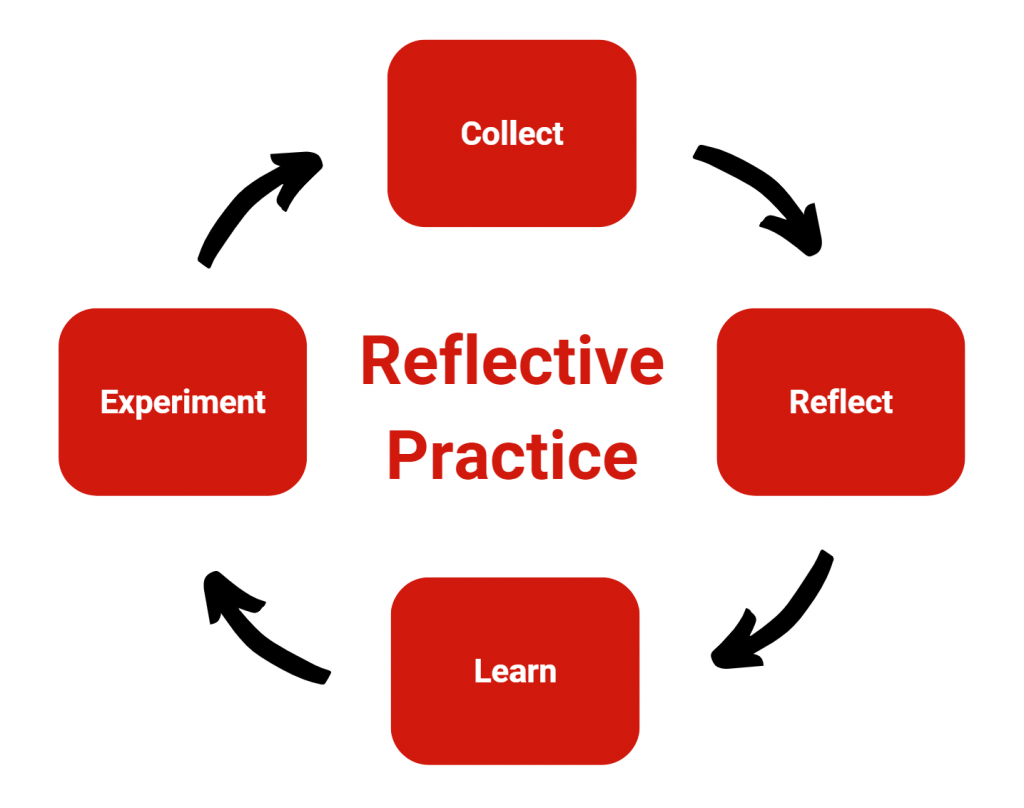Principle 5. Teaching As Reflective Practice: Summary and Rationale
Reflect on one’s teaching practices and beliefs to maximize self-awareness and continual improvement.
Growth as an effective and inclusive instructor is a continual process involving self-reflection, critique, and ongoing learning. Self-reflection includes identifying personal areas of bias or weakness in teaching. One’s beliefs about students, teaching and learning feed directly into how one practices teaching. Engaging in a reflective practice ensures that our beliefs, values, and practices are in alignment through continual growth and adjustment.
Instructors, students, disciplinary norms, and the state of the pedagogical art are all in continual flux, so even the best-prepared and skilful instructor is only such at a moment in time. Successful instructors assert authority and responsibility over their own teaching practices, and develop the reflective capacity to become aware of, and institute, needed changes in their approach to teaching. Exemplary instructors model life-long learning for their students through their own engagement with their discipline, their teaching, and the ever-evolving students in their courses.
Essentially, reflective teaching has two components: collecting information about your teaching, and planning your teaching development.
Collect Information about Your Teaching
Useful information for reflection can come from many sources: students, observations, and guided self-observation and reflection.
Plan Your Teaching Development
Be intentional about your teaching in the time between terms: based on the information you collect, how should you prioritize your teaching development?
Teaching Excellence Plan
Faculty new to Montclair are encouraged to participate in the Teaching Excellence Plan, a three-year plan for developing your teaching to best support student success.
Peer Observations
Guidelines, templates, and rubrics for in-person and online courses.
For more information or help, please email the Office for Faculty Excellence or make an appointment with a consultant.
Last Modified: Friday, March 28, 2025 5:39 pm
CK![]()
Teaching Resources by Montclair State University Office for Faculty Excellence is licensed under a Creative Commons Attribution-NonCommercial 4.0 International License
Third-party content is not covered under the Creative Commons license and may be subject to additional intellectual property notices, information, or restrictions. You are solely responsible for obtaining permission to use third party content or determining whether your use is fair use and for responding to any claims that may arise.

